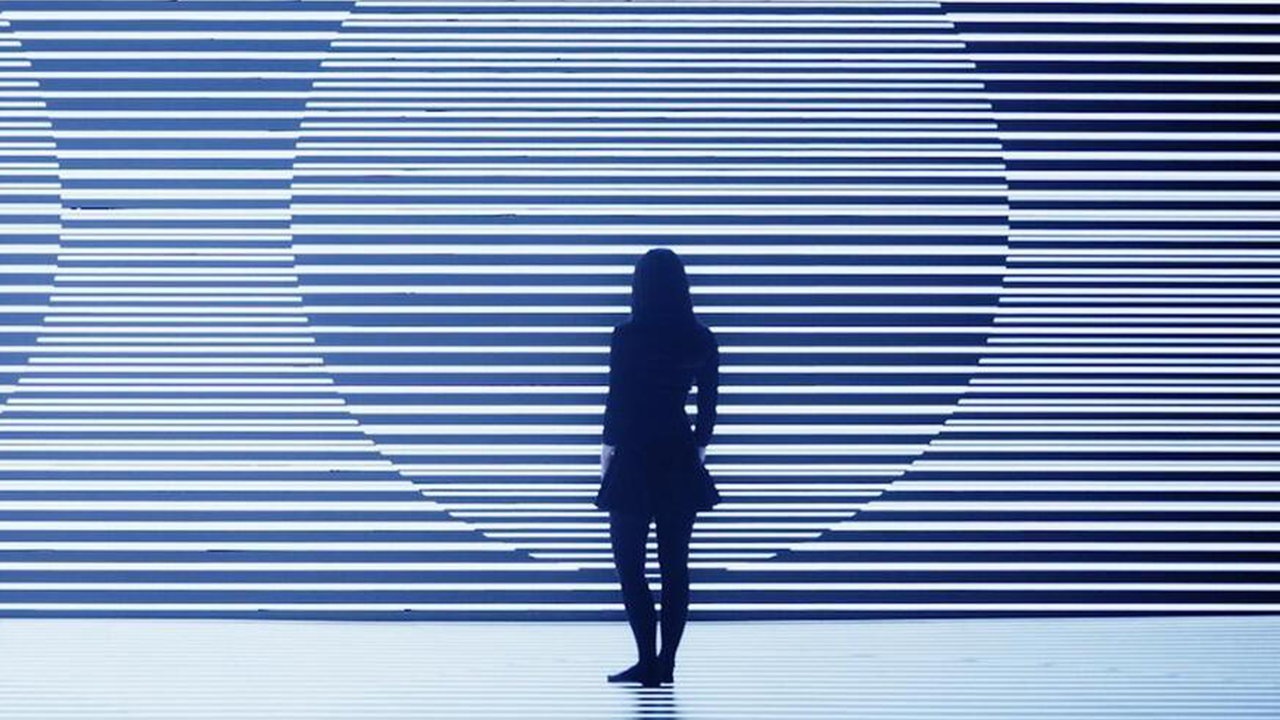The Shows to See During Paris Gallery Weekend
For the weekend’s sixth edition, we pick the best exhibitions to see in the French capital
For the weekend’s sixth edition, we pick the best exhibitions to see in the French capital


Jean-Michel Othoniel
Perrotin
16 March – 8 June
A glimmering steel igloo fills the main room of Perrotin. The work (Agora, 2019) is by French artist Jean-Michel Othoniel, and is a prototype of a public sculpture that will be five times its size and installed in Denmark. This is impressive, as the sculpture is already large enough to walk inside and rest on its surprisingly comfortable seating. The bricks – or perhaps ingots – that form the igloo are found throughout the show. In one room, four irregularly shaped ‘icebergs’ in steel (Iceberg, 2019) surround a stream of blue glass bricks (La Rivière Bleue [Blue River], 2019), while elsewhere they appear in geometric arrangements. The theme is varied by medium; Othoniel has been making his glass bricks since he discovered a traditional Indian technique during a visit to the country in 2009. Othoniel’s works are luminous, subtly referencing minimalism but taking pride in the beauty of his objects.

‘Black Models: From Géricault to Matisse’
Musée D’Orsay
26 March – 21 July
This historically significant and moving exhibition reconsiders black models who have been long overlooked by Western art history. Paintings, sculptures, photographs and historical documents from the 18th–20th century are exhibited alongside extended captions, putting names to faces and context to these (predominantly white) artists’s depictions of black subjects. Manet’s Olympia (1863) is the centrepiece of this vast exhibition, and here a new art historical reading is proposed, turning a critical eye on the black servant (often ignored by art historians) depicted alongside Manet’s famous nude. Elsewhere an impressive array of materials – including the 1794 decree abolishing slavery in French colonies – guides visitors through this update of art history. It’s a serious scholarly task, but one that rightfully acknowledges black models as contributors to the birth of Western Modernism.

Chen Ching-Yuan
mor charpentier
18 May – 27 July
At mor charpentier, an intimate show set across two levels introduces Taiwanese painter Chen Ching-Yuan to a Western audience. It’s an event marked by firsts: Chen’s opening show outside of Asia, and mor charpentier’s inaugural painting exhibition. However, the works themselves come from an artist well-versed in the history of Western painting, with echoes of Old Masters’s brushwork and a sepia palette that gives the paintings a venerable faded feel. The similarities end there, as the subject matter is wholly contemporary and fits with mor charpentier’s ethos of exhibiting explicitly political art. One series (‘Card Stunt’, 2019) depicts North Korean citizens participating in ‘mass games’, in which tens of thousands of people hold up coloured cards, creating a mosaic. Conveying his interest in the play between individual and group decisions, Chen’s timely work asks us to consider the forces driving or impeding democracy.

Thomas Schütte
Monnaie de Paris
15 March – 16 June
The Paris mint stages a labyrinthine show of inimitable German sculptor Thomas Schütte. A monumental steam-breathing dragon (Drittes Tier [Third Animal], 2017) greets visitors in the mint’s Neoclassical courtyard, while inside sculptures, models and works on paper introduce gallery-goers to his long and varied career. Schütte is difficult to categorize, a fact that Monnaie de Paris have addressed by arranging the work into three acts which explore, in turn, the human figure, death and architectural spaces. While his works address grand human themes, Schütte is most impressive at his smallest. A highlight is a room of miniature models, each around the size of hand. One, a matchbox with a Pringle for a roof (from ‘Models’, 1973–2016), is revealed in the following room to be a design for his private museum in Germany: an excellent one-liner.

José Manuel Egea
Christian Berst
25 April – 1 June
José Manuel Egea is obsessed with werewolves. An artist photo at the entrance to his solo exhibition at Christian Berst pictures Egea grimacing, his arms raised in a cartoon gesture of the monster. The works on display, which include altered pages from magazines and defaced sculptures of human body parts, make sense of his obsession. In this two-room exhibition, glamorous women and macho men from glossy advertisements are inverted under Egea’s pen and turned into a spooky arrangement of comic book villains. Under made-up faces or sharp suits, could there a be a little bit of beast within us all?

Florence Lazar
Jeu de Paume
12 February – 2 June
Photographer and filmmaker Florence Lazar is interested in personal accounts of politically significant events. The earliest work on display (Les Paysans, 2000-07), and Lazar’s first foray into filmmaking, is a portrait of a farmer from the former Yugoslavia. Filmed repetitively picking leaves off a pile of sticks, he recounts his nuanced understanding of the events which led up to the Yugoslav wars. Two other films – one feature-length – revisit the subject and consider its legacy, as if only by making sense of history, can people begin to heal. Also on display is Lazar’s 125 Hectares (2019). Returning to the agricultural setting of her first film, the work investigates the abuse of power that caused the 1973–93 insecticide contamination of large areas of the French Caribbean island Martinique. Dotted throughout are a selection of recent photographs, the medium the French artist worked in before taking up filmmaking almost two decades ago.
Main image: Thomas Schütte, United Enemies (a play in 10 scenes), 1994, photograph, 69 x 99 cm. Courtesy: Musée national d’art Moderne - Centre Pompidou, © the artist and ADAGP, Paris


















